Photo: Daniel Prakopcyk
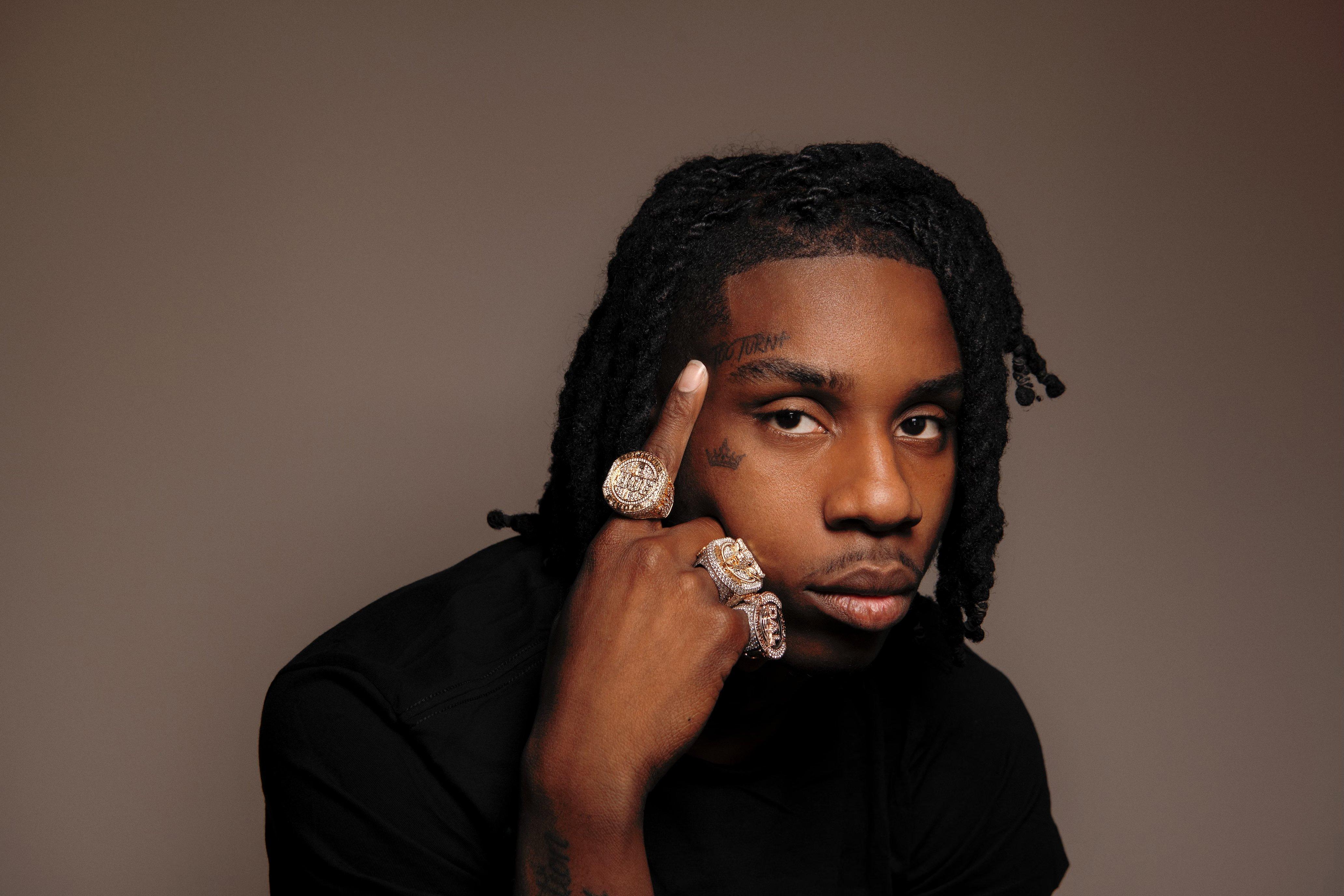
Polo G
news
Polo G Talks ‘Hall Of Fame,’ Fatherhood And His Plan To Be Legendary
Polo G, the 22-year-old rap star from Chicago, spoke with GRAMMY.com about longevity, his third studio album and collaborating with his heroes
Polo G is forging his own path to greatness, one goal at a time. The 22-year-old Chicago native started off 2021 with a major milestone: his first No. 1 record. “RAPSTAR,” his guitar-laced, flex-filled single, debuted at the top of the Billboard Hot 100 in April.
“I had put that on the list of things that I need to accomplish this year and s***, the year [had] just started, and I already scratched that off,” he tells GRAMMY.com.
But Polo’s goals loom larger than a hit record. He’s after longevity and he makes it known on his newly released album, Hall of Fame. It may seem like a lofty title for a rapper’s third studio album (or not because after all Polo did name his sophomore LP The Goat), but Polo can back up his confident claims. After breaking out in 2019 with the now quadruple-platinum single “Pop Out” featuring Lil Tjay, Polo secured his rising status with the release of his debut album, Die a Legend. By the following year, Polo moved his family to Los Angeles and released his chart hit, sophomore effort The Goat, which debuted at No. 2 on the Billboard 200 Chart.
Now, Hall of Fame sees Polo share the stage with some of rap’s biggest players. The 20-track offering features hip-hop icons like Lil Wayne and Nicki Minaj; fellow buzzing artists like DaBaby, Roddy Ricch and Rod Wave; a posthumous verse from the late Pop Smoke; and several other collabs. More importantly, though, Polo maintains his magnetism on the album. Rather than being overshadowed by his star-studded list of collaborators, Polo shines alone–a further testament to his rising star power.
Before releasing Hall of Fame, Polo caught up with GRAMMY.com about his new album, how his almost-2-year-old son inspires him to work harder and what it was like collaborating with his heroes.
You got your first No. 1 hit in April with “RAPSTAR.” Congratulations!
Thank you. Yeah, I had put that on the list of things that I need to accomplish this year and s***, the year [had] just started, and I already scratched that off.
You manifested it! What else is on your list?
My other goals on that list are just to still be here a long time from now.
<style>.embed-container { position: relative; padding-bottom: 56.25%; height: 0; overflow: hidden; max-width: 100%; } .embed-container iframe, .embed-container object, .embed-container embed { position: absolute; top: 0; left: 0; width: 100%; height: 100%; }</style><div class='embed-container'><iframe src='https://www.youtube.com/embed/w2IhccXakkE ' frameborder='0' allowfullscreen></iframe></div>
Your son was featured in the “RAPSTAR” video and you rap about him and fatherhood a lot throughout Hall of Fame. How did being a new dad influence the making of the album and your music overall?
My drive, my work ethic and how hard I go. I’m always thinking about my son.
Speaking about building a legacy, I saw that you tweeted about admiring JAY-Z’s lyricism recently. Is he someone whose career you aspire to?
Definitely. Him being the first billionaire in hip-hop, I know everybody aspires to have that much money. So, I definitely look up to him and rock with him for his business mind.
You worked with a lot of great artists for this album–Lil Wayne, Nicki Minaj, Roddy Ricch. Was there anyone, in particular, you were really excited to collaborate with?
I can’t really put a finger on just one, but actually, the person that I was most excited to work with was Rod Wave because I know how anti-social he is and how he don’t really co-mingle with other artists. So, to be a fan of his music and now to have a song out –a song that I put together with him–really felt like a moment that I was waiting on.
Did you feel like he was a kindred spirit to you in that way?
Yeah, I feel like that’s definitely the exact same way I am. So, I can respect him for that.
Pop Smoke posthumously appears on “Clueless.” When did you guys record that song and how important was it to you to have his verse on the album?
The crazy thing about the Pop record is that it became special to me even more because we had recorded that the night before he passed.
Wow, that’s crazy. And your songs with Nicki and Wayne – I know you’ve mentioned Wayne to be a major inspiration in the past, and Nicki showed you lots of love before the album dropped. What was it like working with both of them?
Wayne is a legend. It didn’t even feel real to me that he was on the song until I got back home from the video and realized that I really just shot a video with Lil Wayne. Same with Nicki because everyone in my family is a Nicki fan –my mama, my sister, grandmama. Everyone congratulated me for getting her on the album.
Lil Tjay’s not on the album, but you guys always have great chemistry when you collaborate, and you featured on his album earlier this year, Destined 2 Win. Can you speak about that relationship a little bit?
Me and Tjay definitely got a lot of music in the works. We got a lot of music that we’re locked in on. It’s really just a matter of picking what songs to put out at this point.
Would you ever consider dropping a joint project together?
I don’t know. It would have to make sense. Like, both of our situations would have to line up. I know he just dropped his second for-real album [Destined 2 Win] and I’m dropping my third one, so I don’t know.
You recorded both The Goat and Hall of Fame after the pandemic hit. How were the two recording processes different or similar?
As soon as I put out The Goat, I started working on my new project, Hall of Fame. The recording process for Hall of Fame was flowing steady, though. I was in the stu’ every single day. Every single day I went to the stu’. Sometimes I may have took a shot before I went in the booth. I was just locked in and freestyling some of these songs, which is really not my forte. You know, I did a lot of things out of the norm just working on this album every day.
By doing that, did you get more comfortable freestyling songs in the booth?
Yeah, I’m getting better at it. The more I just keep rapping, the more I keep getting used to saying just what’s on my heart.
Musically, we hear a lot of classic Polo G on this album–storytelling, melodic production and some heavy-hitting tracks. With “GNF (OKOKOK)” being one of the first Hall of Fame songs you put out, was drill music an inspiration on this album?
I’ve got a lot of different music on there: chill music, turnt music, drill music. Some samples here and there. We’re playing with some popular samples and just a lot of different types of music. I wouldn’t say I really got a drill influence, but I feel like that’s my roots, me coming from Chicago. But I don’t necessarily deem the music I made drill, it’s more so like straight rap. Like, rap without the auto-tune.
You rep your hometown heavy and you also helped organize a traveling youth basketball team, the Chicago Grizzlies, for kids in the community. What inspired you to give back in that way?
It was something that was around when I was younger and that’s what made me want to make sure that the newer generation of kids have that for themselves, ‘cause I know we had that coming up.
What made you choose Hall of Fame as your third album’s title?
It was really just lining things up with me being legendary. I know I’m gonna be a legend in the game when it’s all said and done. I’ll definitely be one of the greatest rappers to ever do it. So, I feel like naming my album Hall of Fame was just me foreseeing the future.
Kind of like how you did with The Goat?
Yeah! [laughing]

Photo: Amy Lee
list
5 Rising L.A. Rappers To Know: Jayson Cash, 310babii & More
From San Diego to the Bay Area, Seattle and beyond, the West Coast bursts with talent. Los Angeles is at the heart of this expanse, and these five rappers are just a few who are showcasing the vibrant sounds of West Coast hip-hop.
GRAMMY winners Kendrick Lamar and Mustard have long repped their California roots. Earlier this summer, their powerhouse anthem "Not Like Us" brought West Coast rap back to its roots and shone a global spotlight on the scene.
Lamar and Mustard are at the forefront of a renaissance in West Coast rap. Their shared roots in Southern California cities — Mustard from Los Angeles and Kendrick from Compton — adds authenticity and resonance to their partnership. Their undeniable chemistry was on display in the video for "Not Like Us," which received a million views less than an hour after its release.
Mustard's signature beats and Lamar's profound lyricism has resurfaced the sound and culture that makes West Coast rap so unique and paved the way for a new generation of artists. All signs suggest that another impactful collaboration may appear on Mustard's upcoming album, Faith of A Mustard Seed.
Learn more: A Guide To Southern California Hip-Hop: Definitive Releases, Artists & Subgenres From L.A. & Beyond
Kendrick Lamar headlined the electrifying Pop Out concert on Juneteenth, which also featured sets from Mustard and DJ Hed. The event saw a handful of L.A. rappers, opening for Lamar in a showcase of the vibrant talent that defines the region's rap scene.
The West Coast is a vast reservoir of talent, stretching from the Bay Area to Seattle. At the heart of this creative expanse is Los Angeles, which brings fresh perspectives, innovative styles, and renewed energy to hip-hop, ensuring the genre thrives. With the stage set for these newcomers to shine, it's the perfect time to take a closer look at some of the rising talents poised to impact the rap scene. While this list only scratches the surface, it offers a glimpse into the diverse and exciting talent from SoCal, the epicenter of the West.
Blxst
Arising from Los Angeles, Blxst initially played the background as a producer but soon demonstrated his ability to excel across all facets of music creation. Blxst's breakout moment came with his platinum-certified single "Chosen," which solidified his place in the music industry. His collaboration on Kendrick Lamar's "Die Hard" from Mr. Morale And The Big Steppers further showcased his skill for crafting hooks that elevate tracks, resulting in two GRAMMY nominations.
As he prepares to release his debut album, I'll Always Come Find You on July 19, Blxst stands at a pivotal point in his career. With a great resume already to his name, his forthcoming album promises to showcase his undeniable talent and leave a lasting impact on the West Coast music scene.
Bino Rideaux
Bino Rideaux is a South Central native and frequent collaborator with the GRAMMY-winning rapper Nipsey Hussle. He is the only artist to have a joint project with Hussle, No Pressure, released before the prolific rapper's untimely death. Rideaux has hinted at having a treasure of unreleased music with Hussle, saved for the perfect moment and album.
Rideaux is known for creating tracks that get the city outside and dancing. He has made three beloved projects with Blxst, titled Sixtape, Sixtape 2, and Sixtape 3 resulting in sold-out shows and a special place in West Coast Rap fans' hearts. Endorsed by industry heavyweights like Young Thug, Rideaux continues to carve his path at his own pace. His journey is nothing short of a marathon, echoing the enduring legacy of his mentor.
Kalan.FrFr
Kalan.FrFr, whose name stands for "For Real For Real," is an artist whose music is as genuine as his name suggests. Growing up in Compton and Carson, Kalan.FrFr has always stayed true to his roots, and exudes the unyielding confidence essential to making it in the City of Angels.
His breakthrough mixtape, TwoFr, showcased his ability to shine without major features, delivering verses with catchy hooks and melodic rap. He's shown he's not confined to one sound, delivering vulnerable tracks like "Going Through Things'' and "Never Lose You." His EP Make the West Great Again, Kalan.FrFr both proves his loyalty to his origins and highlights his versatility. Kalan.FrFr's signature punch-in, no-writing-lyrics-down style keeps his fans on their toes, ensuring that whatever comes next is unpredictable but authentic.
Jayson Cash
Jayson Cash, a rapper hailing from Carson — the same city as TDE artist Ab-Soul — stays true to West Coast rap, from his lyrics to his beat selection. Listening to Jayson Cash's music is like diving into a vivid life narrative. His prowess as a lyricist and storyteller shines through in every verse. He gives his fans an insight into his journey, making it a relatable music experience.
Cash made waves with his debut mixtape, Read The Room, and scored a Mustard beat on the song "Top Down." Two years later, their collaboration continues, with Cash writing on Mustard's upcoming album. Though often seen as an underdog, Cash is not to be underestimated, earning cosigns from West Coast legends like Suga Free and Snoop Dogg. His latest project, Alright Bet, includes a notable feature from Dom Kennedy.
310babii
310babii has achieved platinum-selling status at just 18 years old, while successfully graduating high school. Yet 310babii's career began in seventh grade, when he recording songs on his phone showing early signs of motivation and creativity. His 2023 breakout hit "Soak City (Do It)" quickly gained traction on TikTok — and caught the ears of Travis Scott and NFL player CJ Stroud.
As the song grew in popularity, it led to a remix produced by Mustard, who invited the Inglewood native to join him onstage during his set at The Pop Out. 310babii's innovative spirit shines through in his distinctive visuals, exemplified by the captivating video for his song "Back It Up." His recent debut album, Nights and Weekends, released in February, underscores his evolving talent and promise within the music industry.
Latest News & Exclusive Videos

Behind Ryan Tedder's Hits: Stories From The Studio With OneRepublic, Beyoncé, Taylor Swift & More

Crowder Performs "Grave Robber"

NCT 127 Essential Songs: 15 Tracks You Need To Know From The K-Pop Juggernauts

5 Rising L.A. Rappers To Know: Jayson Cash, 310babii & More

Why Elliott Smith's 'Roman Candle' Is A Watershed For Lo-Fi Indie Folk

Photo: Erika Goldring/Getty Images
list
6 Takeaways From Megan Thee Stallion's 'Megan': Snakes, Shots & Self-Assurance
From the serpentine theme to Japanese rhyme schemes, Megan Thee Stallion's third album snatches back her own narrative and isn't afraid to take a bite.
Beware of venom: Megan Thee Stallion is not biting her tongue on her new album, simply titled Megan.
The GRAMMY winner's first full-length release in two years is also the first to drop under her own control. Fans have been ready for this release even before the first single, "Cobra," came out in November. The second single, "Hiss," followed in January and brought the star her first No. 1 hit on the Billboard’s Hot 100 and Global 200 charts. These songs, as well as the third single, "BOA," foreshadowed a certain slithery theme that helped shape the album.
Megan was released on June 28 and features guest stars such as GloRilla, Victoria Monét, Big K.R.I.T. and Kyle Richh as well as her longtime ace producers like Juicy J (who made "Hot Girl Summer" among other calling cards) and LilJuMadeDaBeat, who produced Stallion anthems like "Big Ole Freak," "Body" and "Thot S—."
Here’s what we learned from listening and vibing to the latest work by three-time GRAMMY winner Megan Thee Stallion.
A Theme Snakes Through Megan
As could have easily been predicted from the first three singles "Cobra," "Hiss" and "BOA," and now the album track "Rattle," there is a hint of a snake theme that wends its way through the album from beginning ("Hiss") to end ("Cobra").
In several songs, she denounces all the snake behavior that she has encountered from former lovers, friends, and haters who support those who have caused actual harm to her. In the music video for "Cobra," Megan literally sheds her old skin to reveal a shining new layer.
Megan Is Calling The Shots This Time
"I feel like Biggie, 'Who Shot Ya?’/But everybody know who shot me, bitch/ So now, let’s stop speaking on the topic," she rapped in "Who Me (feat. Pooh Shiesty)" off her 2022 album Traumazine. MTS was referencing the July 2020 incident in which rapper Tory Lanez shot her in the foot, and was subsequently charged with assault with a semiautomatic firearm and carrying a loaded, unregistered firearm in a vehicle.
Turns out, she wasn’t done referencing the topic. Now, she’s one taking the shots. MTS takes aim at less-talented women rappers on "Figueroa" (named for a Los Angeles street known for prostitution), and at Lanez on "Rattle," when she suggests that his male supporters should schedule a conjugal visit with him in prison. (Lanez is currently serving a 10-year sentence while simultaneously going through a divorce with wife Raina Chassagne.)
More Megan Thee Stallion News & Videos
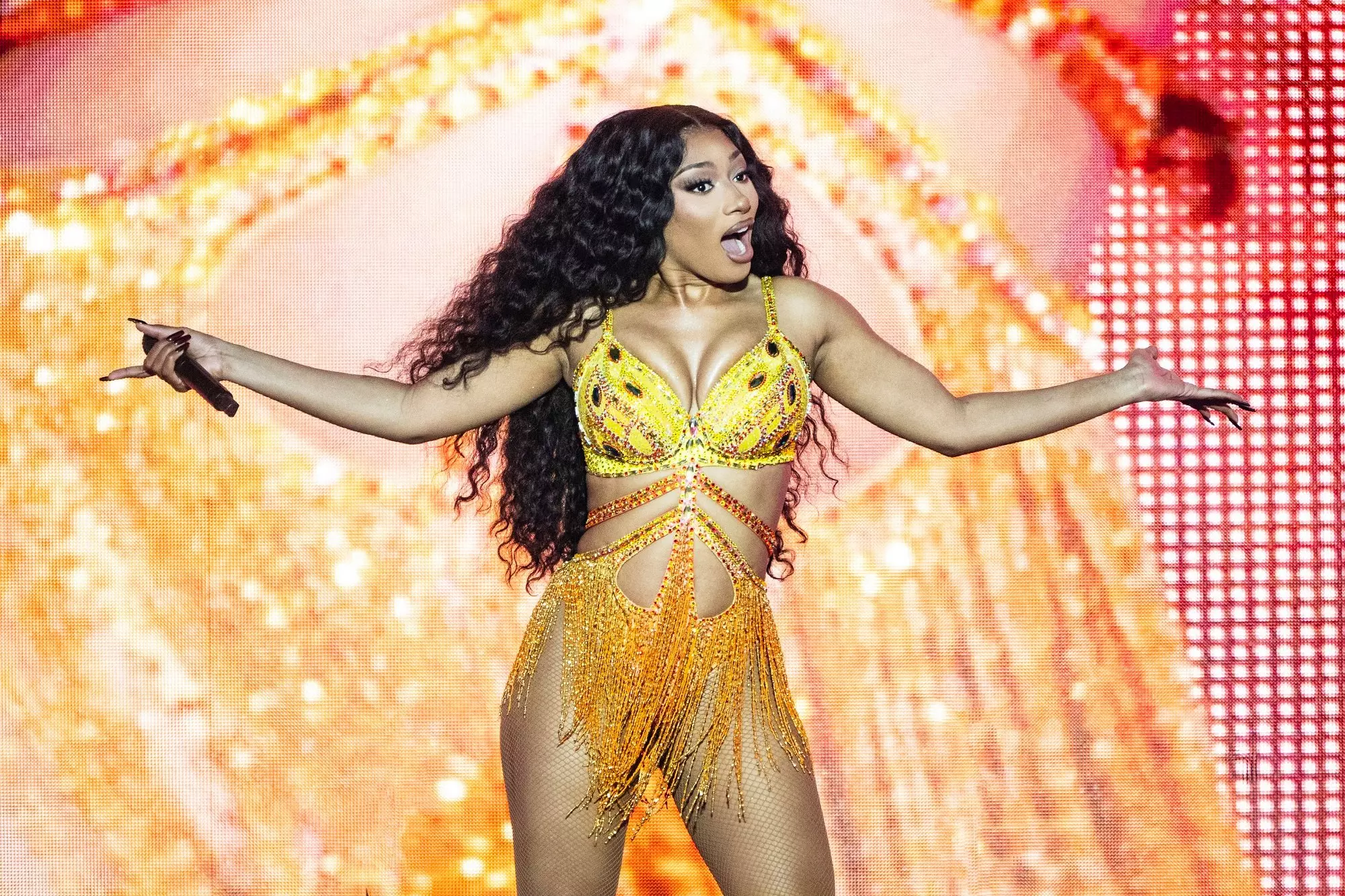
6 Takeaways From Megan Thee Stallion's 'Megan': Snakes, Shots & Self-Assurance
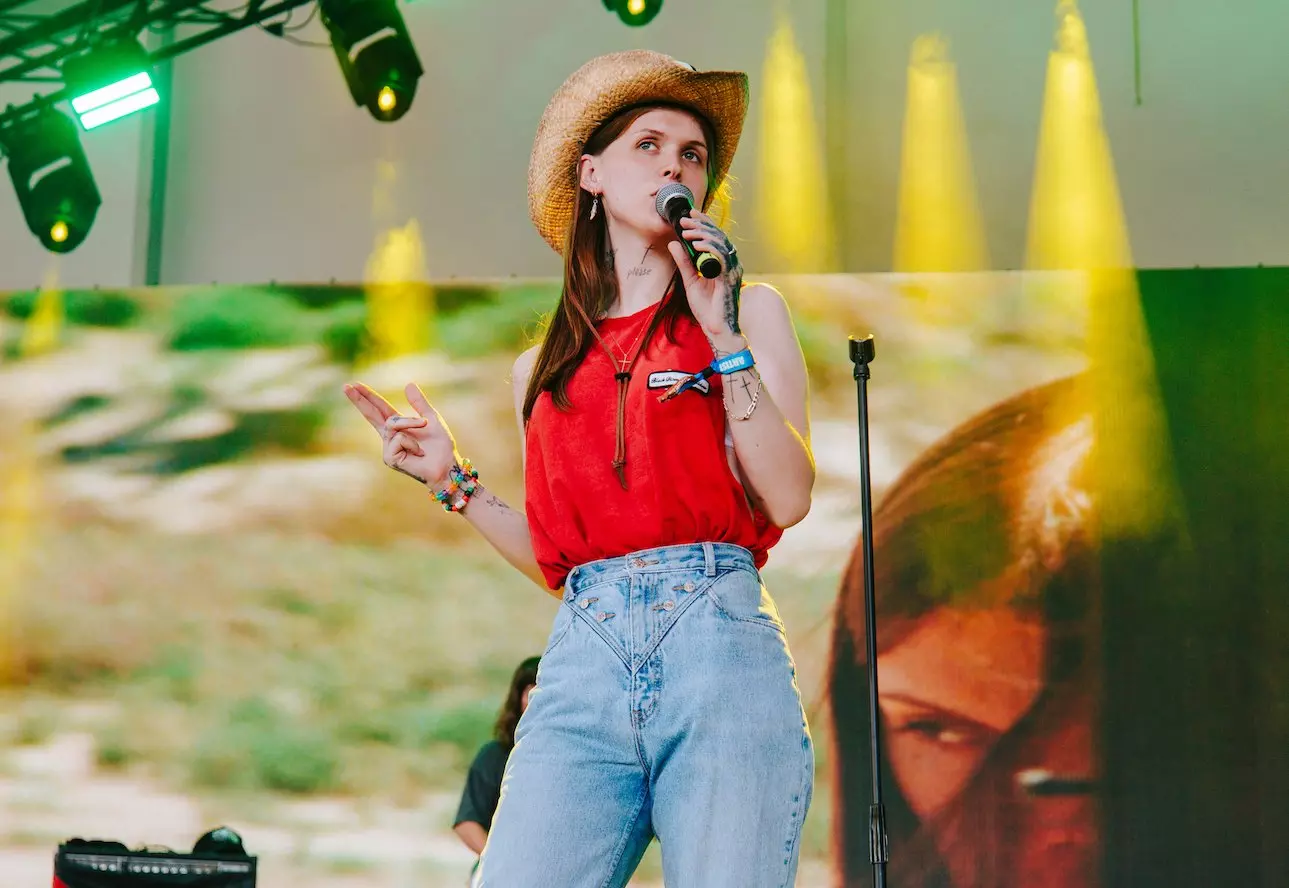
9 Epic Sets From Bonnaroo 2024: Ethel Cain, Melanie Martinez, Megan Thee Stallion & More
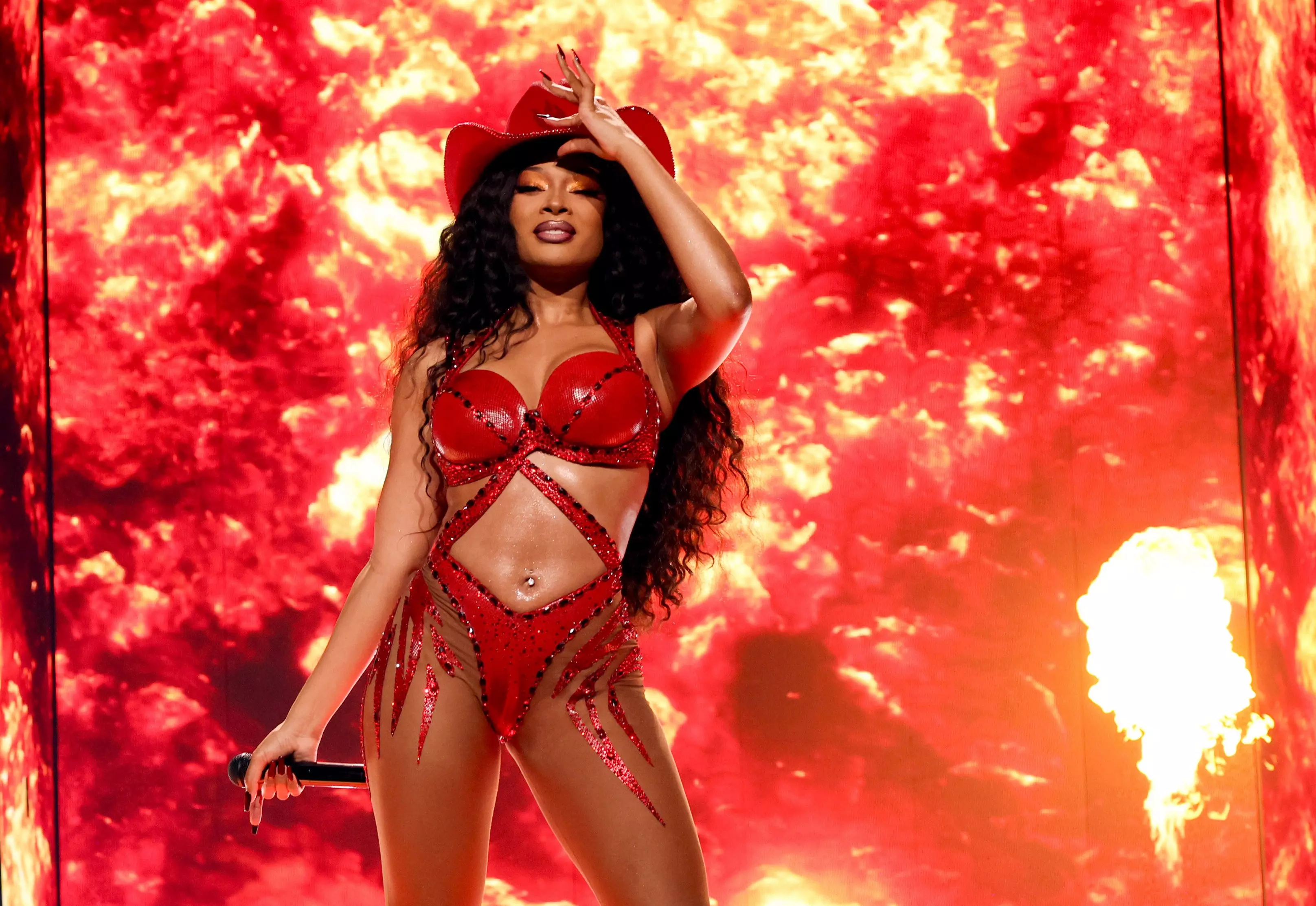
5 Iconic Moments From Megan Thee Stallion's Houston Hometown Shows

Everything We Know About Megan Thee Stallion's New Album 'Megan': Tracklist, Release Date & More
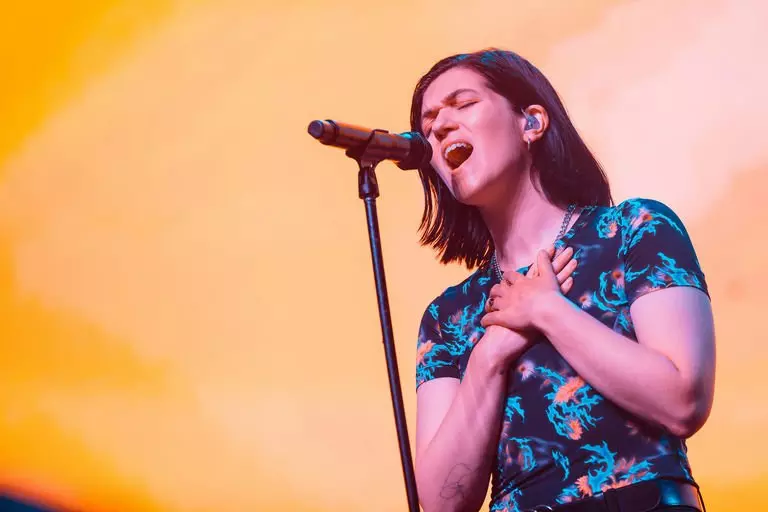
15 LGBTQIA+ Artists Performing At 2024 Summer Festivals
Inspiration Comes From Everywhere
The star and her collaborators incorporate unexpected musical influences on Megan via creative sampling. Megan Thee Stallion speeds up and flips Teena Marie's 1984 ballad "Out on a Limb" for "B.A.S." — a song she co-produced with her longtime ally LilJuMadeDaBeat. "BOA" is cleverly crafted from sounds in the first solo hit by Gwen Stefani, 2004’s "What You Waiting For?"
UGK are reunited from across the heavenly divide on the Juicy J-produced "Paper Together," with Bun B contributing new work and the late Pimp C joining in lyrical spirit. This is especially significant when considering that Juicy J produced "Intl’ Players Anthem (I Choose You)," UGK’s 2007 hit with Outkast. Juicy J also made the beats for Megan’s famous song "Hot Girl Summer."
That’s just the tip of the iceberg when it comes to samples waiting to be discovered on Megan. There are many more riffs and other musical notions that the sample bank in our brains have yet to detect.
Self-Love Is Queen
Whether she’s affirming, "I’m worthy, not worthless" on "Worthy," or literally touching herself in the auto-erotic "Down Stairs DJ" (which joins masturbation masterpieces like Divinyls’ "I Touch Myself" and Tweet’s "Oops"), Megan is grounded in songs that promote self-love as the best kind of love.
She does admit that this is sometimes a challenge to embody, as when she talks about lingering depression on "Moody Girl." But the album generally moves towards the light.
She Loves Japan
One of the big surprises on Megan is that she raps in two languages. She rhymes beautifully in Japanese on "Mamushi" with Yuki Chiba, a seasoned rapper from Japan who is influenced by the Southern swag. (Just take a look at the Memphis moves and Houston rhyme schemes of his viral song "Team Tomodachi.")
On "Otaku Hot Girl," she raps about the manga series "Naruto" and drops other anime references to show her love of Japanese pop culture.
Learn more: 10 Neo J-Pop Artists Breaking The Mold In 2024: Fujii Kaze, Kenshi Yonezu & Others
Megan's Game Is Tight
Megan is the first album to be released on Megan Thee Stallion’s own label. It follows her split from 1501 Certified Entertainment, a record label with which she was engaged in a protracted and ugly legal battle for earnings.
She now has the muscle of the major label Warner Brothers as a partner for her independent venture, Hot Girl Productions. She also recorded an Amazon Original song called "It’s Prime Day" for a commercial, as well as an exclusive Amazon edition of Megan.
It’s safe to say that this album represents a new level of business freedom and acumen for Megan Thee Stallion.
PRIDE & Black Music Month: Celebrating LGBTQIA+ & Black Voices
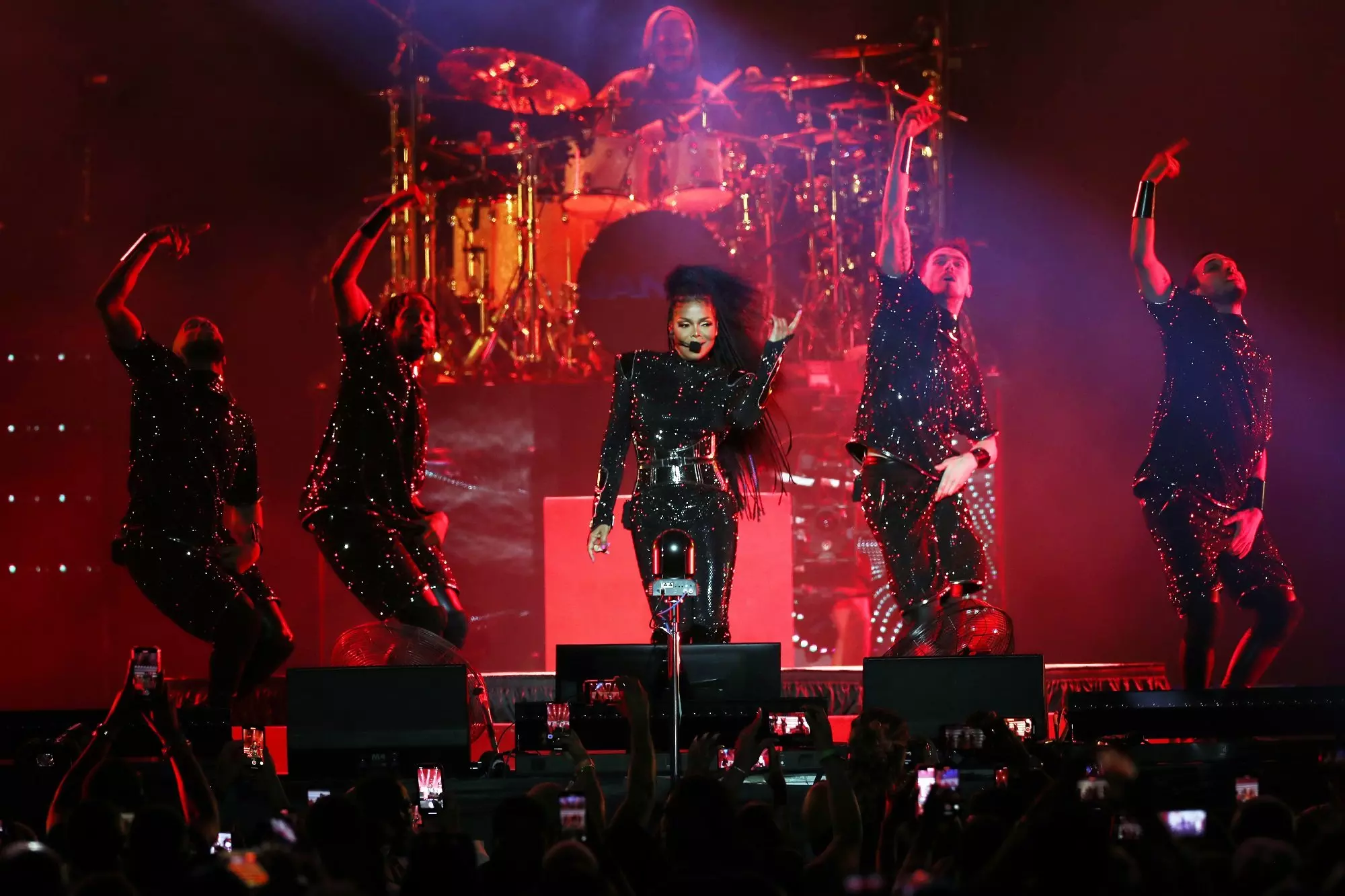
Celebrating 30 Years Of Essence Fest: How New Orleans & Multi-Generational, Diasporic Talent Create The "Super Bowl Of Culture"
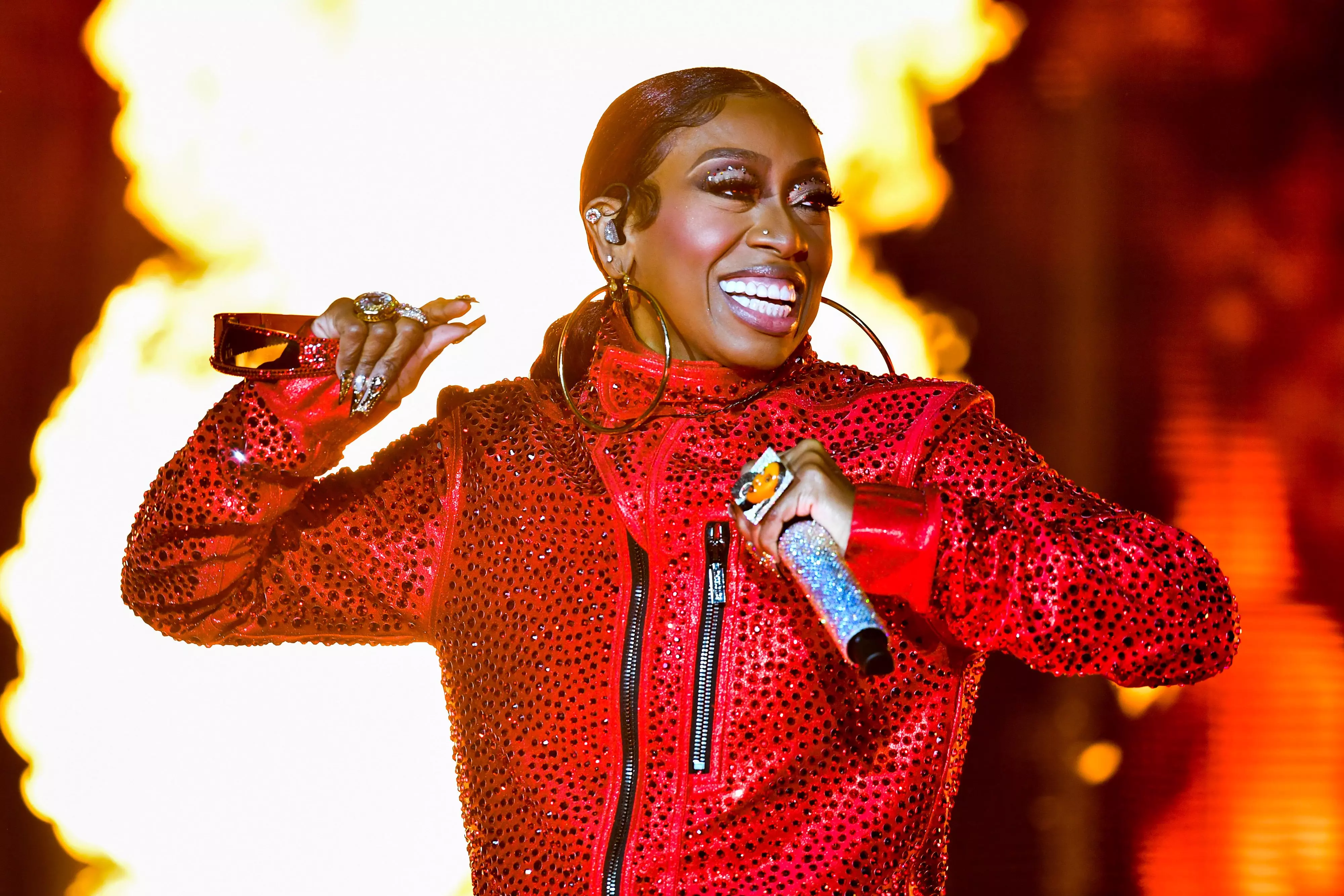
Celebrating Missy Elliott: How The Icon Changed The Sound, Look & Language Of Hip-Hop

Tekno Talks New Music, Touring America & His "Elden Ring" Obsession
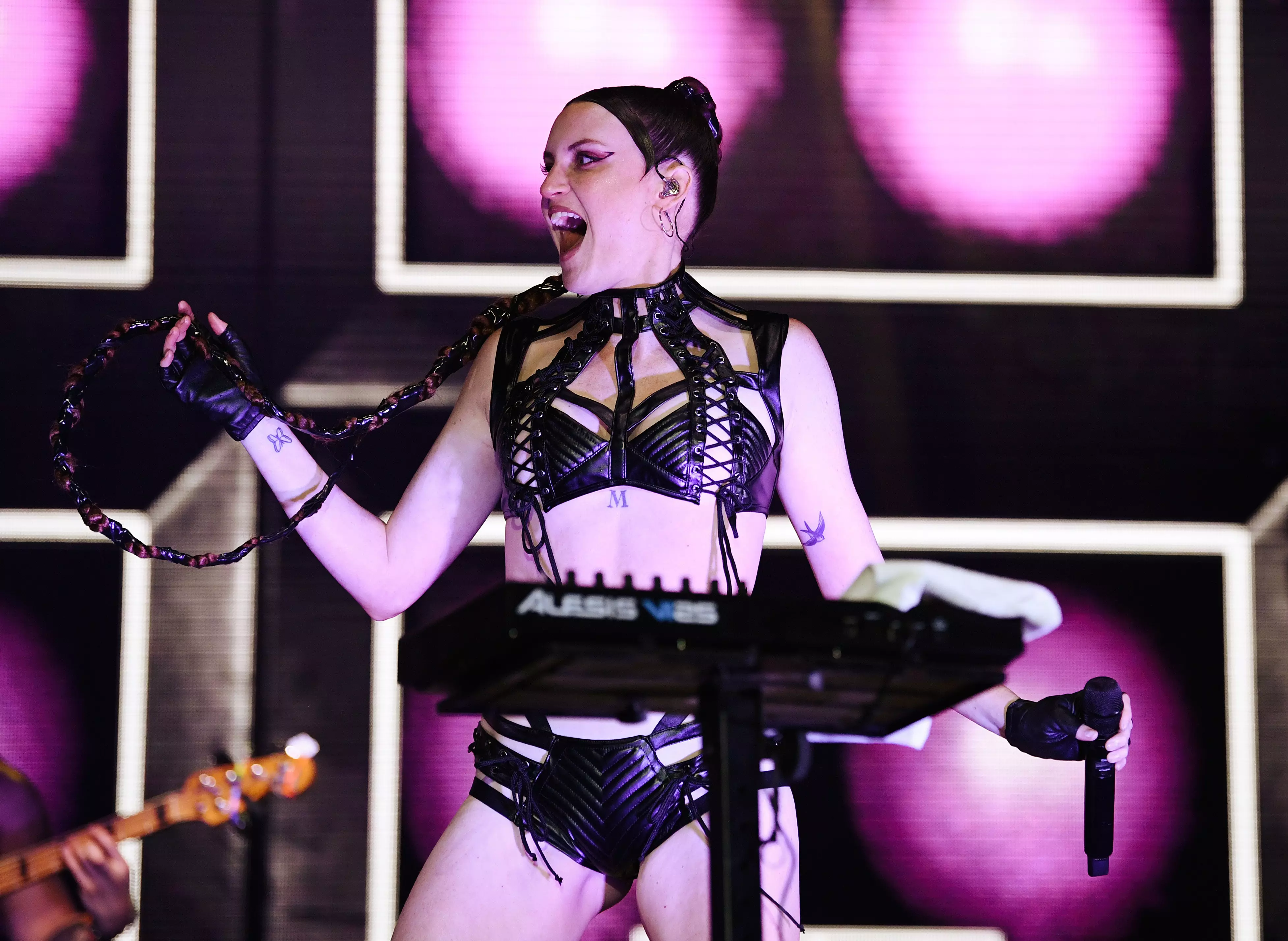
5 LGBTQIA+ Record Labels To Check Out: Get Better Records, So Fierce! And Others
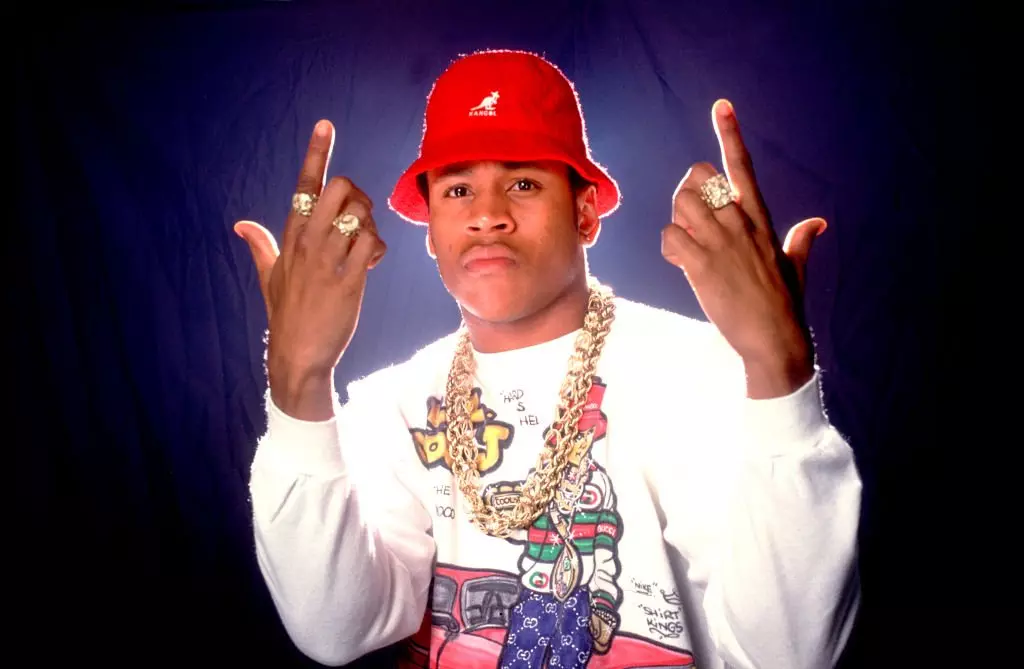
Celebrate 40 Years Of Def Jam With 15 Albums That Show Its Influence & Legacy
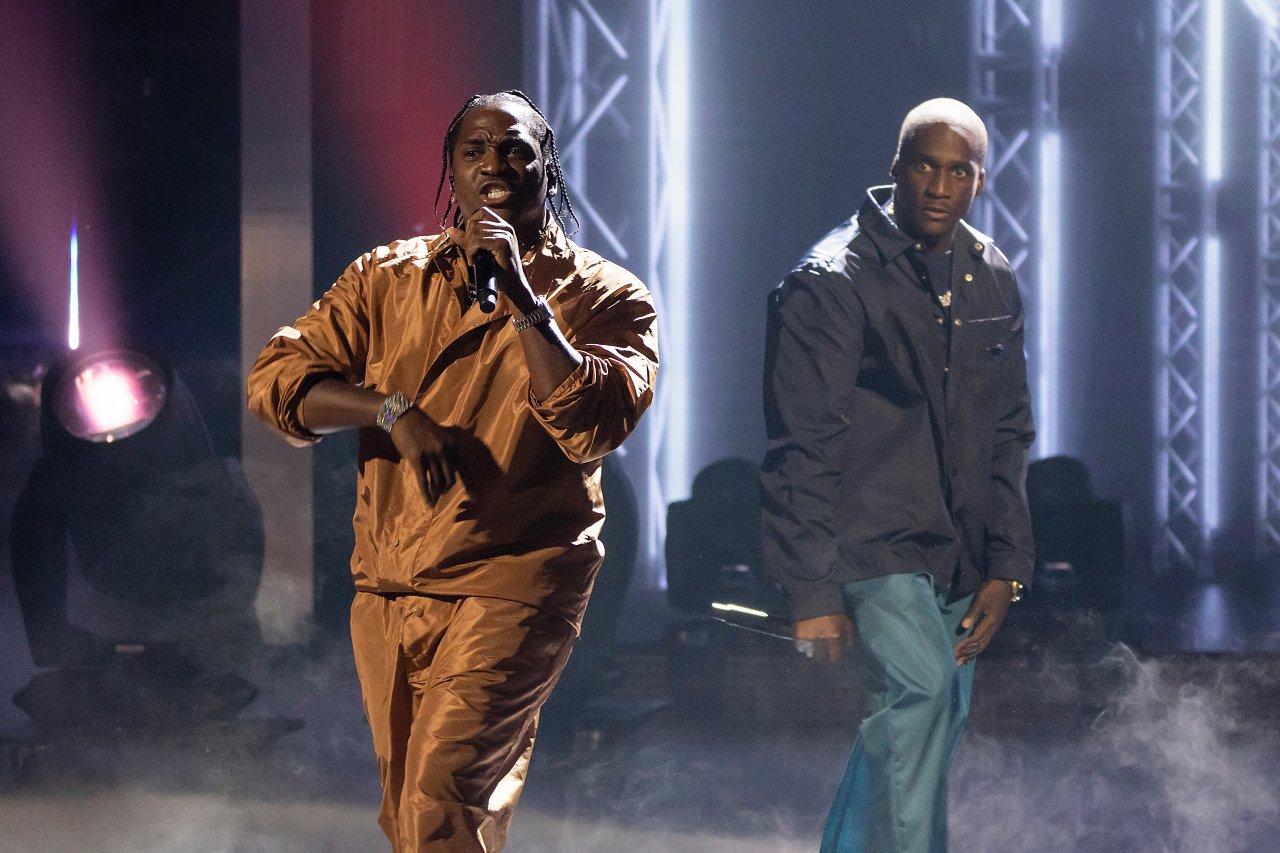
Photo: Terence Rushin/Getty Images
news
Everything We Know About Clipse's First Album In 15 Years: Pusha T And Malice Rise Again
While there's no title or release date for the new Clipse album, brothers Pusha T and Malice have teased the essence of the project, including a preview of their first new song, "Birds Don’t Sing," since 2009.
Legendary Virginia Beach rap duo Clipse have mostly been on ice since 2009's Til the Casket Drops — and that decade and a half off ends now.
The duo, composed of brothers and rap phenoms Pusha T and Malice, is back with a new, John-Legend-featuring song, "Birds Don't Sing," from a reunion project whose title has yet to be disclosed. Listen to a preview of the new song, their first new track as the Clipse since 2009, below.
It's bracing to hear purveyors of witty, sneakily profound coke raps get real about the deaths of their parents: "Lost in emotion, mama's youngest / Tryna navigate life without my compass," King Push raps at the outset. "Some experience death and feel numbness / But not me, I felt it all and couldn't function.”
It only gets realer from there: "You told me that you loved me, it was all in your tone / 'I love my two sons' was the code to your phone," Malice raps in his verse. If "Birds Don't Sing" is any indication, Clipse's first album in forever will be illuminating indeed.
We don't know much about the "Grindin'" hitmakers' reunion album, other than what Pusha T and Malice revealed in a wide-ranging Vulture interview. But for hip-hop fans, the breadcrumbs they dropped are enticing indeed.
It Will Reflect The Clipse's Maturation
Pusha T is vocal about hating the Pharrell-produced Til The Casket Drops, which has always left their story hanging. They seem to be all in on this LP — one that's designed on their own terms.
"I think the album shows the supreme maturation of a rap duo," said Push. "I think this is where you get the difference between taste and filler. This music is curated. This is a high taste-level piece of work.
"You can only have that level of taste when you have the fundamentals down to a science," he continued. "I think it's been definitely missing. Then there's the competitive aspect." Added Malice: "This is smart basketball. It's fundamentals."
Read more: For The Record: How Clipse's Lord Willin' Established Virginia's Foothold In Rap
Pharrell Williams Produced The Entire Album
Despite Pusha T's reservations about Til The Casket Drops, Pharrell Williams has been an integral part of the Clipse's operation since the beginning — and he returns to produce the new project.
"Pharrell producing everything is also an ode to the type of music and the type of albums we want to make," he added. "We still want to make full bodies of work. These are movies, man. These aren't just songs. This isn't just a collection of joints we went in and banged out."
Maturation Doesn't Mean Abandoning Coke Raps
As Pusha T points out in the interview — yes, they rap about selling coke, but to reduce it to that is to miss the point entirely.
"There's no way that you can listen to that level of storytelling and experience and just walk away just saying 'That's coke rap.'" Malice says. "If you just want to say that it's just crack rap, then you can't even assess what's really being said or what's going on."
Indeed, what the Clipse staked their claim on isn't off the table. In fact, it's lined up and ready.
Get Ready For A Bona Fide Clipse Era
As Pusha T stresses, this Clipse revisitation will come from multiple directions: "Appearances, touring, and a rap album of the year" are coming down the pike.
As more information about the forthcoming Clipse album flows in, keep GRAMMY.com bookmarked so you know the details — as these fraternal MCs join forces once more.
Latest Rap News & Music

5 Rising L.A. Rappers To Know: Jayson Cash, 310babii & More

6 Takeaways From Megan Thee Stallion's 'Megan': Snakes, Shots & Self-Assurance

Celebrate 40 Years Of Def Jam With 15 Albums That Show Its Influence & Legacy
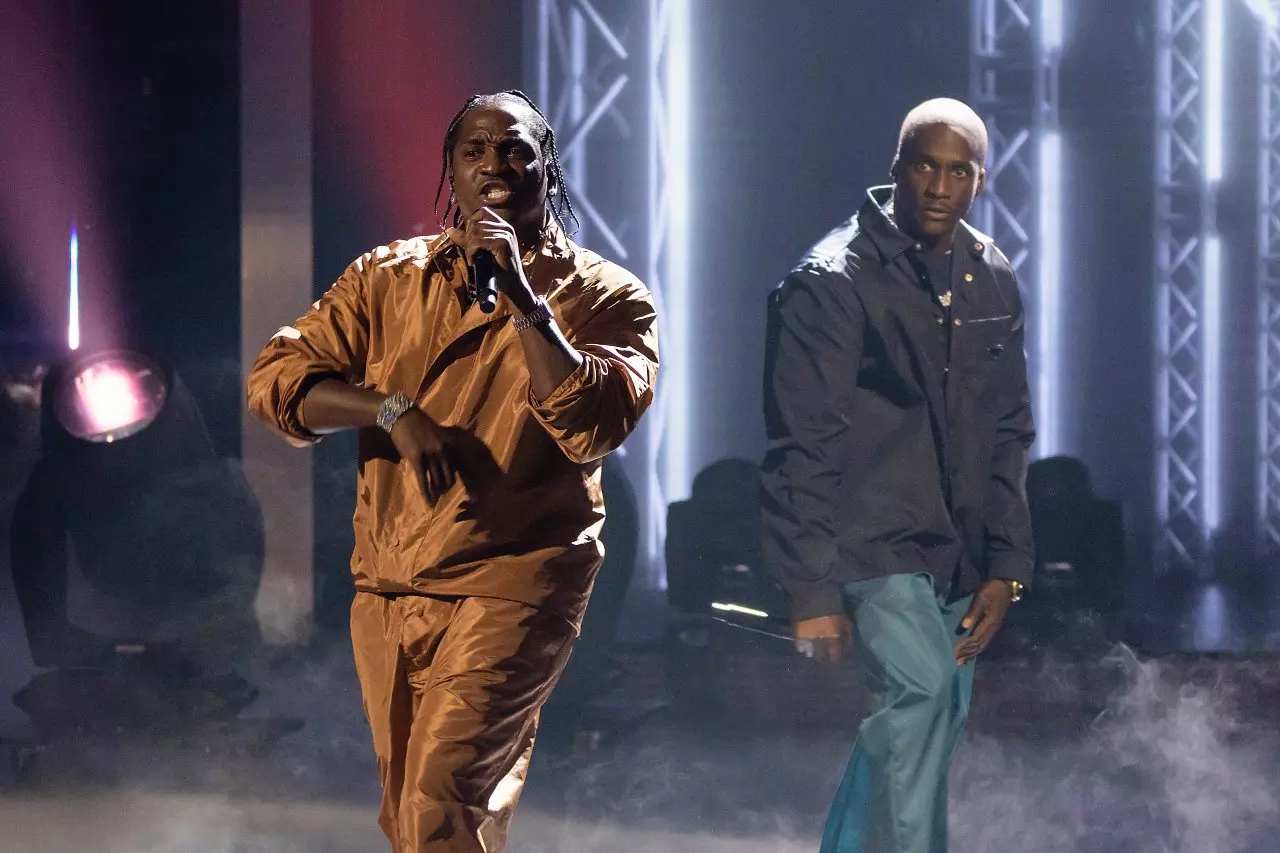
Everything We Know About Clipse's First Album In 15 Years: Pusha T And Malice Rise Again

5 Iconic Moments From Megan Thee Stallion's Houston Hometown Shows
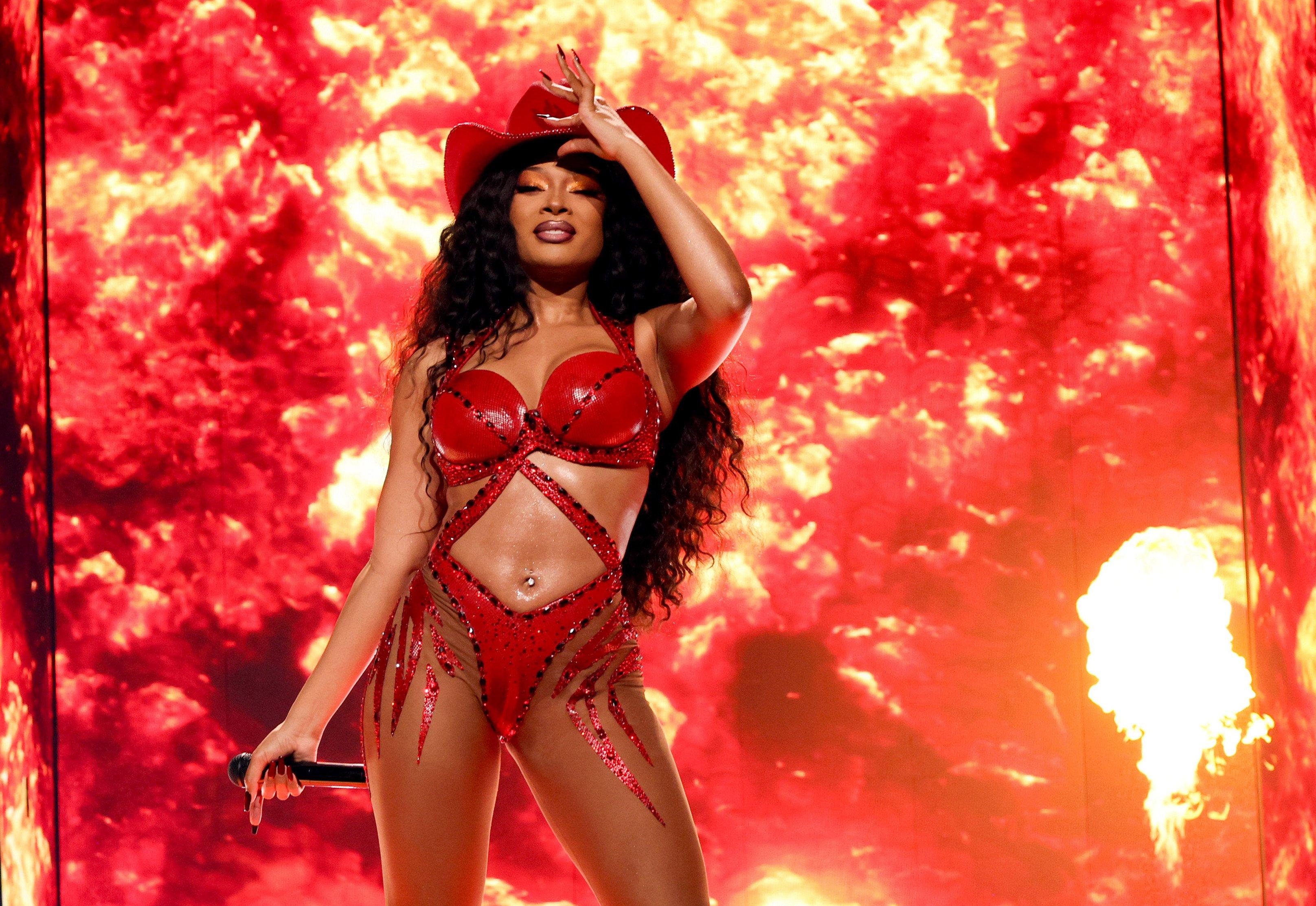
Photo: Kevin Mazur/Getty Images for Live Nation
list
5 Iconic Moments From Megan Thee Stallion's Houston Hometown Shows
Megan Thee Stallion returned to Houston on June 14 and 15 for an epic homecoming filled with surprise guests, gifts and plenty of twerking. Revisit five of the most exciting moments from the Houston stops on the rapper's Hot Girl Summer Tour.
Seven years into her career, Megan Thee Stallion is no stranger to a sold-out crowd. The rapper has been dubbed "Sold-out Stalli" since selling out nearly 20 shows on her Hot Girl Summer Tour — and though her stops at Houston's Toyota Center weren't the first sellouts on the trek, they were considerably the most meaningful ones.
"I'm so happy to be home," Megan, a lifelong Houstonian, told the crowd on June 14, night one of the back-to-back shows. After honing her rap skills and launching her career in H-Town, the star expressed her gratitude for the support her Houston fans have shown her from the start.
"Hotties, y'all know what we've been through, y'all been rocking with me since day motherf—in' one," she gushed on night one. "I love y'all, I appreciate y'all, I respect y'all and I'm very grateful for y'all because, without the Hotties, there would be no motherf—in' Hot Girl Coach."
The two-night stint highlighted Megan's vulnerability, drive and exceptional showmanship. But above all else, her hometown shows reminded fans that she's just a strong-kneed, animé-loving girl from Houston.
Below, check out five of the most memorable moments from Megan Thee Stallion's Houston homecoming.
She Organized A Hottie Egg Hunt
Before stepping on stage on June 14, Megan sent Houston fans on a Hottie Egg Hunt for a chance to win merchandise and tickets to the show that night. The three-part interactive adventure featured clues, documented on Instagram and X, that helped fans locate the golden eggs.
The first clue reads, "A wild stallion can't be tamed…meet me at the place where I'm gonna rock the stage!" The second, "Where I run through the mall with your daddy." The last, "People are smart, my Hotties are smarter, find this egg where I got one degree hotter."
Eager fans scoured the whole city and eventually found the eggs at Megan’s favorite spots in Houston: Toyota Center, The Galleria and Texas Southern University. So far, Houston has been the only city Megan has done this for, making for another special moment between her and Houston hotties.
She Continued To Prove She's A Girls Girl
An unfortunate rap show trend has seen several female opening acts receive hate ahead of male headliners. Luckily this hasn't been the case for Memphis rapper GloRilla, who has noticeably been enjoying her experience as an opener on the Hot Girl Summer Tour.
On night two in Houston, GloRilla presented Megan with a blown-up art piece commemorating her upcoming album, Megan, on stage. In return, Megan complimented the 24-year-old rapper, saying, "Glo is one of the realest women I've ever met."
That evening, Megan showed her love for another rising star — and fellow Houston female rapper — Monaleo. The Mo City rapper sent the crowd into a frenzy as she sang her 2023 hit song "Beating Down Yo Block," which samples the classic "Knocking Pictures Off Da Wall" by Houston's Yungstar.
She Paid Homage To Houston Legends
Monaleo was far from the only Houston native to take the stage with Megan during her hometown visit. On night one, Megan surprised fans with a legendary performance from a few Houston all-stars. The room filled with excited screams as H-Town''s Bun B popped out to perform UGK's "Int'l. Players Anthem (I Choose You)." As if it couldn't get more iconic, Megan joined the legend on stage to rap Pimp C's verse of the song.
The night also featured a legendary performance of "Southside" by Lil Keke, which Megan teased prior in the show with her "Southside Royalty Freestyle." Fans also got to enjoy Slim Thug's verse from "Still Tippin," a song he shares with Mike Jones and Paul Wall. (Wall also performed the song on Megan's tour the previous night at Austin's Moody Center.)
On night two, Megan brought out another Houston great, Z-Ro to rap a classic, "Mo City Don." Though a Hot Girl at heart, Megan couldn't help but celebrate the legendary men who paved the way and left a historic mark in Houston's dynamic hip-hop scene.
She Showed — And Received — Hometown Love
As Megan arrived at the Toyota Center on June 14, she received a surprise welcome by students from her alma mater, the Pearland High School Band and Prancers — a heartwarming kickoff to a night of mutual love between Megan and Houston that put her in high-spirits before the show.
Both nights were filled with an immense amount of energy and support, from Megan signing autographs throughout the show to making sure she got the perfect selfie with her beloved supporters. Even during more tender moments — like “Cobra," a song about suicide and her depression — felt particularly moving because of the interaction between Megan and her hometown fans.
She Put The "Hot" In Hottie
Taking notes from another H-Town hero and fellow Houstonian, Megan put on an impressive show reminiscent of Beyoncé, from jaw-dropping choreography to stunning wind-blown poses. Megan also tapped into her past life as a Prairie View A&M Panther Doll with majorette-inspired dancing during her song "Cognac Queen."
Of course, she wouldn't be Thee Stallion if she didn't show off her twerking skills and famously powerful knees during her two-hour show run. Fans even got to participate in the twerk-fest during intermission, as a "Hottie Cam" panned through the audience, showing love to the girls and boys.
If her hometown shows were any indication, Megan Thee Stallion's future is not just bright — it's smoking hot as well.
